The World Nomads Podcast: Chile
From the arid Atacama Desert in the north to trekking Patagonia in the south - stargazing and geysers.
 Photo © getty/ Fotografías Jorge León Cabello
Photo © getty/ Fotografías Jorge León Cabello
Listen Now
The World Nomads Podcast: Chile
In this episode, we explore the arid Atacama Desert in the north to trekking Patagonia in Torres del Paine in the south - stargazing and geysers.
Want to read personal, inspiring and engaging stories about travel? Go here.
What’s In the Episode
00:12 Welcome
00:54 Quiz Question
01:24 Chad Carey from Chimu Adventures "...Yeah, Chile's sort of got one of the longest coastlines in the world so even though it's a thin country there's a huge diversity in geography and different sites that you can see along the length of that coast. From deserts up in the north down to the wilds of Patagonia at the bottom so there's a huge amount of variety all through Chile."
09:13 The generous donation of land for national parks
11:32 Author Stephanie Dyson "...when I was in San Pedro de Atacama, which is the best-known town in the north of Chile, and it's considered the best place, I think on the planet, to go stargazing. Which is because of the high altitude, the fact that it's so dry so you don't get very many clouds and also because there is very little light pollution because there's hardly any towns and things there. I went on a stargazing tour and it is just incredible the kind of quality and the purity of the stars that you see when you're there."
15:25 What World Nomads staff have been up to
17:45 Chilean wine
20:54 Milly McGrath "...The funny part is, that part of the W trek is really difficult if there's been a lot of snow and ice and we ended up doing this whole, I think it was 75 kilometers of the W trek and on the last day we were supposed to go up to see, I think they call it Los Torres. When we got about 100 meters shy of the summit it was just completely hard packed snow, so icy, well I took one step and almost slipped over so I just went, not worth it."
31:26 Guillermo Muñoz
36:49 Wine tasting
40:18 Next episode
Who’s on the Episode
Stephanie Dyson is a freelance travel writer, a former teacher and educational volunteer in South America, currently based in Santiago.
“I am a regular contributor to Rough Guides, Gapyear.com and Transitions Abroad, as well as being a Meaningful Travel Insider for Go Abroad. I specialize in writing about travel in Bolivia, Peru, Chile and Patagonia (alongside South America in general) as well as meaningful travel and volunteering.”
Steph has written an article for World Nomads focusing on the north of Chile.
You can also follow her blog, Wordly Adventurer.
When our editorial producer, Milly, isn’t at her desk, she’s camping, four-wheel driving or hiking a trail but seriously underestimated Chile’s W Trek. Check out her blog, Where’s Mildo or follow her on Instagram.

Milly contemplating her choices on the W Trek day 3
Guillermo Muñoz is the owner of Rental Natales, a camping and equipment company in the Torres Del Paine National Park.
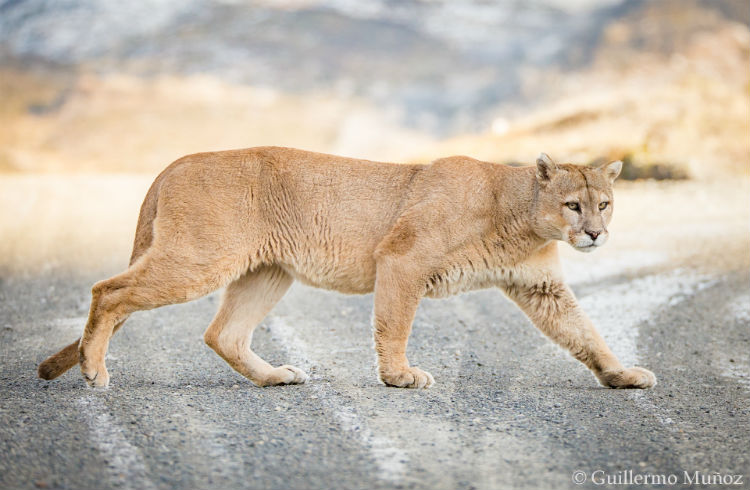
A Puma in Torres del Paine captured by Guillermo Muñoz. You can follow Guillermo on Instagram @gmunozs
And check out this awesome photo also taken by Guillermo of Torres del Paine
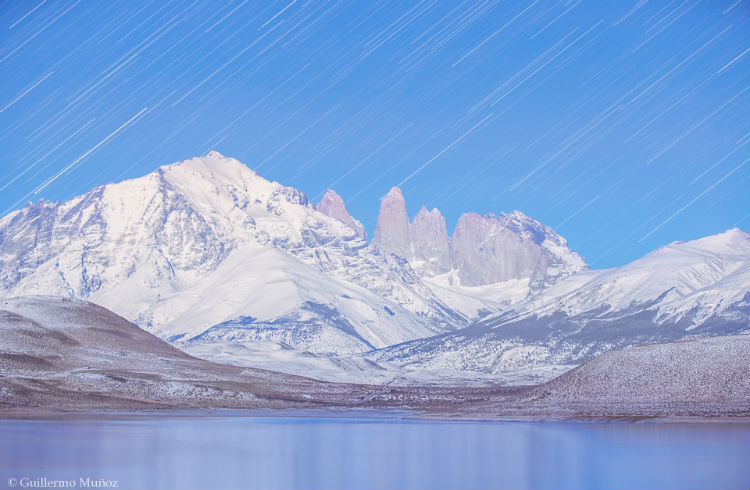
Chad Carey from Chimu Adventures. Founded in 2004, they are an Australian owned company offering fully flexible, guaranteed itineraries to Latin America, plus cruises to Antarctica, catering to clients of all ages.
Resources & Links
Click here for Chile travel inspiration, or here for travel safety tips
Scholarships Newsletter: Sign up for scholarships news and see what opportunities are live here.
Follow World Nomads on Instagram for the latest stories, and #WorldNomads for your chance to be featured.
Want to Re-publish This Episode?
Copy this code onto your web page or blog:
<iframe width="100%" height="200" src="https://player.whooshkaa.com/player/episode/id/254230?visual=true&sharing=true" frameborder="0" style="width: 100%; height: 200px"></iframe>
Want to Talk to us?
We want to hear from you! If you have any travel insurance questions to Ask Phil, want to give us feedback on the episode, or have suggestions for topics you'd like us to cover, email us at podcast@worldnomads.com
Sign up for Podcast News
Explore your boundaries and discover your next adventure with The World Nomads Podcast. Hosted by Podcast Producer Kim Napier and World Nomads Phil Sylvester, each episode will take you around the world with insights into destinations from travelers and experts. They’ll share the latest in travel news, answer your travel questions and fill you in on what World Nomads is up to, including the latest scholarships and guides. The World Nomads Podcast is not your usual travel Podcast. It’s everything for the adventurous, independent traveler. Don’t miss out. Subscribe today.
Next episode: Amazing Nomad Dan Pierson
About World Nomads & The Podcast
Explore your boundaries and discover your next adventure with The World Nomads Podcast. Hosted by Podcast Producer Kim Napier and World Nomads Phil Sylvester, each episode will take you around the world with insights into destinations from travelers and experts. They’ll share the latest in travel news, answer your travel questions and fill you in on what World Nomads is up to, including the latest scholarships and guides.
World Nomads is a fast-growing online travel company that provides inspiration, advice, safety tips and specialized travel insurance for independent, volunteer and student travelers traveling and studying most anywhere in the world. Our online global travel insurance covers travelers from more than 135 countries and allows you to buy and claim online, 24/7, even while already traveling.
The World Nomads Podcast is not your usual travel Podcast. It’s everything for the adventurous, independent traveler. Don’t miss out. Subscribe today.
Speaker 1: 00:00 Welcome to the World Nomads podcast delivered by World Nomads, the travel lifestyle, and insurance brand. It's not your usual travel podcast. It's everything for the adventurous independent traveler.
Speaker 2: 00:12 Welcome to the World Nomads podcast, and our destination for this episode is Chile or Chile.
Phil: 00:18 Chile the country, we know what it is. It's that long narrow strip down the Western Coast of South America. Its got the Andes on the East, which is why it doesn't go inland much more on the Pacific Ocean to the West, and bordering with Peru, Bolivia, Argentina, and of course, The Drake Passage.
Speaker 2: 00:36 All big names.
Phil: 00:37 They are.
Speaker 2: 00:37 All big names. In this episode, we'll learn about the arid Atacama Desert in the north, here we go. Head to the wild south to explore trekking, chat Chilean wine and find out about the mummies that are older than those in Egypt.
Phil: 00:51 No. Okay. All right.
Speaker 2: 00:52 Apparently. Firstly, what's your quiz question?
Phil: 00:54 All right, by the time everyone hears this, it'll be too late, but put this in the calendar for next year. I've just heard about this one. Every year in the first week of July, is the Mango Festival, mango-eating competitions. Wear a raincoat. Fantastic. Mango quizzes and other sorts of mango-related competitions. This happens because in the area where this city is there are more than 50 varieties of mangoes are grown there. But, what's the city? Where's the Mango Festival?
Speaker 2: 01:21 Well, I guess you'll tell us at the end of the episode.
Phil: 01:23 I will.
Speaker 2: 01:24 Chad Carey has a company called Chimu Adventures, and they offer itineraries to Latin America. However, Phil, it's an Australian-based company.
Phil: 01:24 Okay.
Speaker 2: 01:33 And Chad, how'd that come about?
Chad Carey: 01:35 Yeah. Well look, it's Latin America and the polar regions, really. But I guess how it came about is, Greg, my business partner and I, were actually working in London at the time, and I wanted to go and explore South America. I didn't really know what to do. I looked around and tried to find a few tours. Just couldn't find trips that I liked for that sort of region, that were [inaudible 00:01:59]
Greg had just come back from living over there, and we sort of, after half a dozen beers, or so, decided it would be a great idea to start a business plan as a travel and actually start a tour-operating business to Latin America.
So that's when I traveled around for about six months. Did a bit of that, met a lot of people, tried out a bit of a business plan, got a few angel investors involved and things like that, and got back to Australia, and we sort of gave it a shot.
Speaker 2: 02:22 Now, this podcast is on Chile in particular so what are the options to explore Chile? Are the endless?
Chad Carey: 02:28 Yeah, Chile's sort of got one of the longest coastlines in the world so even though it's a thin country there's a huge diversity in geography and different sites that you can see along the length of that coast. From deserts up in the north down to the wilds of Patagonia at the bottom so there's a huge amount of variety all through Chile.
Speaker 2: 02:51 Tell me about, and now I'm hopeless with pronunciation, the Atacama Deserts?
Chad Carey: 02:57 Yeah, no, perfect, spot on. You nailed it. [crosstalk 00:03:02]
Phil: 03:03 I gotta tell you Chad, that's the first time she's ever got one right.
Speaker 2: 03:06 I have read that there are places in that desert where it has never recorded one drop of rain.
Chad Carey: 03:15 Well, it's the driest place on earth except for a little region called the dry valley in Antarctica, but other than that it's the driest place on earth. And so its obviously got these dramatic landscapes, there's not a lot of vegetation. The Valley of the Moon is one of them that's quite famous, there's actually quite a few Valley's of the Moon around that whole region into Bolivia as well because it's the closes you come to having a lunar landscape. But it's also one of the best stargazing spots on the planet, in fact, there's a lot of observatories and things in that region and ones that visitors can go and see as well.
Speaker 2: 04:00 So, do you encourage trekking through that area.
Chad Carey: 04:04 Trekking, probably not so much just there, actually on the north on the Argentinian side there's probably a few better treks. I think you're better off going around in a four-wheel drive vehicle to get around to different spots, it's quite a big distance between them and because it's so barren sometimes between those spots it's not conducive to trekking as much. But, it's just really getting to the geysers and getting to some of the lakes. You've got a whole string of lakes that come through some of those regions just different colors in every spot, you've got flamingos through them, all sorts of wildlife so it's pretty spectacular. For me the best thing to do is just at night just to lay out and gaze up at the stars, the air is so clear there that you can see the Milky Way so clearly, it's very bright, almost blindingly bright, so there's quite a lot to see up there.
Speaker 2: 05:06 Tell me about Patagonia too, I've heard, everybody talks about Patagonia when they mention Chile, I've heard it's expensive. As a World Nomad, as someone who want's to go off the beaten track, can you experience it without breaking the bank?
Chad Carey: 05:20 Yes, look, there are some tourist places that are expensive like Torres Del Paine National Park which is sort of the famous one there and even for that you can do it on a bit of a shoestring. There a lot of Refugios, these little camps that you can stay in and do it there but even doing those, on a shoestring budget it can be quite expensive. But Torres Del Paine is just a small portion of Patagonia which really goes from the lake district between Chile and Argentina all the way down to the bottom of South America generally. All through that lake district area is quite amazing in itself but there's a whole bunch of untouched, reasonably untouched parks through that area that just aren't visited by the average traveler. In fact the Tompkins, Doug, and Kristine I think it is, Tompkins who were the founders of Esprit and they also worked at Patagonia as well, and were obviously quite wealthy. Doug Tompkins just died recently and he donated all their land to Chile to create a huge national park through there. It's only recently become a national park. So that's still is reasonably unexplored and not many tourist have actually been there. So, with all these regions you can go to through Patagonia which don't cost you much, you can camp, you can trek, you can do all sorts of things and live off a shoestring pretty easily.
Phil: 06:49 Is there a better time of year to go and do that?
Chad Carey: 06:50 Definitely the Southern Hemisphere, you don't want to go there in winter, especially down towards the bottom, the Tierra del Fuego which is right down the bottom, outside of, you've got about October to April and that regions okay but outside of that it's way too cold, snow and everything like that.
Speaker 2: 07:08 Does it feel like, Phil, you'll be able to answer this question, does it feel like South America's a real go-to place at the moment?
Phil: 07:15 Yeah, absolutely. I'm actually calling it, a couple of times in conversations I've named it the Southeast Asia of the 2000's. Back in the 70's everybody went off and went exploring what was then unexplored, in Western terms, Southeast Asia and I think that's happening to South America now. It's really starting to, I mean, travel to there is just booming, it's just growing leaps and bounds every year. So, yeah, I think it's the new travel frontier.
Speaker 2: 07:47 And what would your reaction to that be, Chad?
Chad Carey: 07:50 I think so too. As you say, Asia sort of was that for quite some time but, most of Asia now has become a little commoditized and to that extent, there isn't that exploration component to it as much. For me really the only two continents where you can get that experience now, Africa and South America, and Africa, obviously, has a few safety issues with it. South America did so in the past a little be but these days other than, with the exception of Venezuela, the whole continent is relatively safe so you can still have that adventure component while still feeling safe so I think that's why it's such a massive attraction at the moment.
Phil: 08:31 Yeah, Venezuela, I'm also quoted as saying "you have to be crackers to go Caracas." It's a dangerous place. So what are companies like you, what are you doing to try and make sure South America doesn't become commoditized?
Chad Carey: 08:46 Yeah, I think as things become more popular it will happen to a certain extent, at least in the popular areas, but I think the great thing with South America compared to say Asia, which is so densely populated in Asia, South America has so many vast, untouched areas where we're just all relatively off the beaten track. I still think it's got a considerable time to go before all those areas become well trodden, that's for sure.
Speaker 2: 09:13 That's good to hear and just a bit more information on that donation of land for national parks that Chad mentioned from Douglas Tompkins, he was the co-founder of the clothing brands Esprit and the North Face. It is still the largest ever made in Chile's history. 407,625 hectares or 1 million acres.
Phil: 09:34 Wow. Sadly though Douglas died in 2015 when he was 72 in a Kayaking accident in Southern Chile.
Speaker 2: 09:43 Now, later in the episode, Phil, we'll catch up with World Nomads Milly who spent time in Chile, Milly went to Chili and -
Phil: 09:50 I've been waiting for that. I've been holding that in reserve, I've been waiting for that.
Speaker 2: 09:54 And, she'll talk about the walk she did on the W Trek, that's in the south of Chile. This is Steph who is going to talk to us about Northern Chile. Did you like that one, Milly went to Chile, Steph?
Steph: 10:10 Very, very good, with lot's of good Chile jokes, I think.
Speaker 2: 10:14 Do you know any others?
Steph: 10:15 Well, I mean, every time it gets cold here it's Chilly in Chile, I think that's the best one. Just that joke.
Speaker 2: 10:23 Alright, so, you've written an article that we'll share in show notes but you say while the south of the country is best known for its lush forests and the glacier riddled mountains that Milly will chat about, northern Chile is, in many ways, very opposite. Can you explain why? Or how?
Steph: 10:40 Yeah, I think what people don't realize about Chile until they get here is it's one of the most extreme countries I think there is in South America, it has got so many different landscapes and while in the south you've got the Andes Mountains and you've got the glaciers and you've got lots of hiking and things like that. In the north, it's basically the Atacama Desert. It's an extraordinary landscape and its got a surprising number of things to do for something that you'd imagine would be particularly barren. It's a complete contrast.
Speaker 2: 11:18 We chatted earlier to Chad who's said that the desert is known for star gazing?
Phil: 11:24 Yes, and also stargazing
Speaker 2: 11:27 Stargazing is what I was trying to say. Have you experienced that and the Milky Way in the purest form?
Steph: 11:32 Yeah, when I was in San Pedro de Atacama, which is the best-known town in the north of Chile, and it's considered the best place, I think on the planet, to go stargazing. Which is because of the high altitude, the fact that it's so dry so you don't get very many clouds and also because there is very little light pollution because there's hardly any towns and things there. I went on a stargazing tour and it is just incredible the kind of quality and the purity of the stars that you see when you're there. It's really such a recommended activity for anyone who does get to go there.
Speaker 2: 12:09 Well, you've got a great photo in the article that you've written for us. So what else is up north that's different to the south?
Steph: 12:17 Well I guess one of my favorite things when I was there, which was last year, is the mummies, the Chinchorro mummies, which are actually the oldest on the planet.
Phil: 12:30 Pre-dating the Egyptian mummies.
Steph: 12:32 Yeah, they actually pre-date them by 2000 years.
Phil: 12:35 Oh, just a bit then.
Steph: 12:36 And it's fascinating because no ones heard of them either, this is what strikes me so much about northern Chile, they've got the oldest mummies on the planet and no one knows.
Speaker 2: 12:46 So, how were they uncovered?
Steph: 12:48 Well, basically, they're called the Chinchorro mummies because that's the name of the beach that you find on Arica, Arica's the northernmost town, or city really, in Chile, and basically some of the most famous ones were found in the foundations of a house that was being converted into a hotel and they started digging and they just found, I think it 32 mummies they found in the foundations of this house and they couldn't do anything about it. They couldn't move them because they were in such a delicate state so now you can actually go and visit this house and go and see the mummies, still lying in the ground, still just kind of staring up at you, it's really fascinating museum to visit.
Phil: 13:31 Was mummification part of
Steph: 13:37 It was a bit of a surprise. What's so interesting about the Chinchorro mummies is that they actually, because of the climate, because of how dry it is in the desert, a lot of them were actually mummified naturally. And they don't know if that kind of pre-dates the actual, the mummification, the practices that then the Chinchury people adapted, but they've survived so well because it's such a dry climate that they've just been buried in the sand and survived to this day.
Phil: 14:12 Were in northern Chile now, so, the indigenous culture, the local culture, how does it differ from, I mean because you've got the Andes chain going all the way up, but how does Chilean culture differ from, say, Peruvian?
Steph: 14:27 Well, this is another interesting thing about Chile that I think there's quite a few misconceptions about the culture here because if you're in Santiago it's very European, you could feel like you were practically in any city in Europe, but the north of Chile has a lot in common with Peru and Bolivia. The Andes has a very, very strong culture and for the indigenous Aymara and Quechua speaking cultural groups and things like that so when you're in the north, particularly around San Pedro de Atacama, Arica, there's a real sense of the Andean culture that you can see a lot in the clothes that people wear and also in the adobe buildings that they have there as well. So, the mud houses that you see a lot more in Peru and Bolivia then you do in other parts of Chile.
Speaker 2: 15:16 Okay, let's leave Steph there for the time being and we'll come back to her to chat wine and, Phil, we uncovered a cultural war in our episode on Finland, didn't we?
Phil: 15:24 Yeah, yep
Speaker 2: 15:25 Chile and Peru have their own battle going on which Steph will tell us about, but we will catch up with our own World Nomad Milly who went to Chile later in the episode but she's not the only employee that loves travel. I did a quick whip around some of the other staff to see what they've been up to.
Speaker 6: 15:42 The last trip I had was to Central America, Costa Rica, Florida, and Panama. I was actually over there to visit a Sea Turtle charity that we sponsor through the Footprints Network. After the work trip I actually went up to Canada to visit a few mates up there and went skiing in [inaudible 00:15:56], that was always good.
Speaker 7: 15:58 My last big trip was Central America so that was Mexico, then Guatemala, Nicaragua, Costa Rica then jumped down to Columbia as well. It's amazing, I think it's got a really new tourist scene in a lot of places and everyone's real excited to show you around and stuff. I had a really good time.
Speaker 2: 16:15 So what's next, you gotta be sitting here in the World Nomad's headquarters in Sydney thinking where can I go.
Speaker 7: 16:20 Yeah, I'm really looking to go to Seoul, I think I'm planning that for next year.
Speaker 2: 16:24 All right, well you need to listen to the podcast on South Korea.
Speaker 7: 16:28 Yep, definitely gonna [inaudible 00:16:30]
Speaker 8: 16:30 It was family based so we went home to New Zealand.
Speaker 9: 16:32 UK in October. We're doing [inaudible 00:16:34] road trip around southwest so that's fun. There'll be something new for us both.
Speaker 10: 16:37 My last trip was to Bali and the Gili Islands in Indonesia. I was working remotely from the coworking space there but also managed to sneak away off to the Gili Islands to have a bit of a snorkel and check out the local scene.
Speaker 11: 16:51 My next trip next week will be going taking my
Speaker 12: 16:57 My travels these days are pretty close to home. Camping and doing little mini adventures, instill in our kids the love of travel so that's where we're at right now.
Speaker 2: 17:08 And I've just returned from Japan while, Phil, you're planning a trip to ...
Phil: 17:12 Singapore. Gonna try Singapore.
Speaker 2: 17:13 We don't just walk the walk, we talk the talk. Now, you haven't been to Chile or Chile but you rate their wine, which, look seriously, I struggle with that because I haven't tasted a good Chilean wine. So, we'll get back to Steph, chat wine, find out why Chile and Peru don't see eye to eye on a drink called pisco, then we'll be back.
Steph: 17:33 I am a big fan of Chilean wine. I think they're working their hardest to get the good stuff sent out of the country and people to see how tasty it is.
Phil: 17:42 Say, you keep all the good stuff in Chile, your not sending, is that right?
Steph: 17:45 Well, the funny thing is as well I don't think the Chilean general population actually knows that much about wine, but it feels like, yeah, you can get some really, really good wine here for, I don't know, like five, six dollars and it's really good quality and if you go and visit the vineyards as well, like wow. In terms of pisco, pisco is basically, it's a type of brandy that they make from the grapes and it's quite and interesting drink because there's a very controversial discussion, let's put it, between Peru and Chile as to who actually had the first pisco and I think most of the time things go in favor of Peru but Chile has its own place called Pisco [inaudible 00:18:31] where they still make pisco to this day and if you go and visit there's some really great little boutique, they're called piscaries and you can go and visit them and you can get taken around the facility, you can go and try some pisco and it's very strong, so be careful, and one of my favorites, there's a place called Fundo Los
Speaker 2: 19:03 Okay, well let's put this argument to rest at the end of the episode. Phil, are you up for a quick tasting between you and I, and a few others [crosstalk 00:19:12]
Phil: 19:13 I've nicked down to the bottle shop and I've got a bottle of Chilean wine so I'm up for a tasting.
Speaker 2: 19:18 Okay, so just a reminder, on record, me not a fan, you ...
Phil: 19:22 I've had some good ones.
Speaker 2: 19:26 Welcome Milly McGrath back to the studio. Last time we chatted to you it was about New Zealand and you had a shocking cold, are you well enough to chat today?
Milly McGrath: 19:34 Oh yes, I certainly am.
Speaker 2: 19:36 And why wouldn't you be, you've just spent three months in South America.
Milly McGrath: 19:41 I have.
Speaker 2: 19:41 How was it?
Milly McGrath: 19:43 It was awesome, absolutely unreal but I'd probably say the highlight was Torres del Paine in Patagonia. That was the five day, 100-kilometer trek around the W circuit. We started the trek, I think the last day of April which is just about officially winter in Torres del Paine. It's called the W circuit because a birds-eye view of the park you can, you actually have to back track a few times, obviously as a W so you start at a place called Paine Grande then you walk up to Glacier Gray, then you come back the next day and you walk up to the middle of the W which is the Francis Valley and then you start walking back down the other side of the W until you get to the base of the towers. There's these three really famous granite pillars that sit at the base of a lake and they're really beautiful. All the photos of Torres del Paine that you see will be tiny person with big landscape with these big pillars.
Phil: 20:51 Right, seen them, yes.
Milly McGrath: 20:54 The funny part is, that part of the W trek is really difficult if there's been a lot of snow and ice and we ended up doing this whole, I think it was 75 kilometers of the W trek and on the last day we were supposed to go up to see, I think they call it Los Torres. When we got about 100 meters shy of the summit it was just completely hard packed snow, so icy, well I took one step and almost slipped over so I just went, not worth it.
Speaker 2: 21:27 Really?
Milly McGrath: 21:27 Yeah, it was that bad.
Phil: 21:29 So, did you get to see them, did you see them?
Milly McGrath: 21:31 No
Phil: 21:32 By a hundred meters?
Milly McGrath: 21:34 So, there was this trail, we actually saw three other people going up there that
Phil: 21:50 So you were just too to carry on and do it then.
Milly McGrath: 21:54 Full disclosure, Mark was powering ahead, he had his trekking poles dug into the snow but me, I'm clumsy. If you know me I'll trip over anywhere, over my shoelaces.
Speaker 2: 22:04 But then she's being a responsible traveler.
Phil: 22:06 That's right, she's looking after herself, no helicopter evacuation as you say [crosstalk 00:22:10]
Speaker 2: 22:13 So, any advice out of that that you would give to anyone that's considering trekking the W trek?
Milly McGrath: 22:19 If you haven't done overnight hikes and carried all of your gear, our packs were about 16 to 22 kilos, you have to carry all of your food, all of your sleeping gear, all of your clothes for the full five days, especially if you're in winter. When the season is open, when it's not freezing cold, which is actually all the time in Patagonia, you have the option to stay in these things called
Speaker 2: 22:56 So they have some facilities?
Milly McGrath: 22:57 They do, and you can actually pre-book a tent so when you roll into camp at night a tent is already established for you but you really do have to book in advance. If you're not an experienced hiker go during Patagonian summer, book a Refugio, or a pre-established tent or something and enjoy those comforts because Mark and I have done a few overnight hikes and, honestly, the W trek was so unbelievably difficult. Those Patagonian winds are worse than you can imagine. They are just as bad as they say they are and when you're carrying a 15 to 20-kilo bag on your back you will fall over. And it's very serious.
Phil: 23:44 Well, it's like having a sail on your back, I mean, it's catching the wind. As well as[crosstalk 00:23:48], but yeah, I mean, I was being cheeky before, you are an experienced hiker and outdoorswoman, you are off all the time in Australia so it's not like you're a complete novice, right?
Milly McGrath: 24:01 Yeah, I've been to Nepal earlier this year so, I'm not the best but ...
Speaker 2: 24:08 You're not a novice
Milly McGrath: 24:09 Yeah, and we're reasonably fit but I'd probably just say the W trek is really popular, it's becoming more popular and it is more difficult than a lot of articles proving online. So, winter is treacherous, really worth it because we had no one else on the trail whereas we heard from other people that during summer you're walking next to hundreds of people.
Speaker 2: 24:32 Tell us about the mouse epidemic.
Milly McGrath: 24:34 Ooh, so, there's a mouse epidemic in Patagonia at the moment. I'd heard from someone that it had started a few months back, I think maybe because irresponsible travelers are leaving their food all over the place or not disposing of their garbage. You're supposed to carry all of your rubbish out with you, so, people have obviously been leaving that around the campsites or in the little huts where you can get some shelter. These mice will come out at night and they will go through your food. You'll find them in the tent, the nibbled a hole in the top of our tent and dropped onto one of our sleeping bags one of the nights. But one of the best pieces of advice we got was don't take anything with you into your tent at night. That includes a little tube of paw paw ointment to keep your lips moisturized, hand cream, nothing, no food, anything because the mice will actually sniff out anything that has a bit of smell on it.
Speaker 2: 25:36 What about condoms?
Milly McGrath: 25:38 I don't know if there'll be any of that on the W trek, you're pretty tired. But I would include condoms on that list.
Speaker 2: 25:47 You would?
Phil: 25:48 Well, they're like mouse sleeping bags.
Milly McGrath: 25:50 A mouse sleeping bag.
Speaker 2: 25:55 Well, you know, I was just thinking they're lubricated just like a paw-paw ointment.
Milly McGrath: 26:00 It was a reasonable point, Kim
Phil: 26:02 How disappointing it would be if you suddenly discovered that your condoms had a hole bitten in it by a tiny mouse, at the most inconvenient moment.
Speaker 2: 26:15 All jokes aside, how did you keep your food away from the mice because I suspect if they got into it that would be a big issue.
Milly McGrath: 26:22 So, what we did, we used this cord and lock that we got from Katmandu, we rigged that up, we connected it to all of our bags plus pots and stuff that we'd been cooking with, it's a really strong chain, so we hung that from a really thick branch then we had two backpacks, one big bag of food and the pots, you attached all of them and then I had to help pick it up while Mark quickly latched it on and we did the combination and attached that to the tree. But one other thing you can do is get a stick and sit it in the bottom of the rope so that carries all of the weight of all of your bags. If you don't do that, a lot of people were hanging their bags from the rafters in the huts, that's actually where the mice are the most active.
Speaker 2: 27:12 And if you didn't mouse proof your food and you lost it, no shops around.
Milly McGrath: 27:16 Oh no, and I'm not sharing my food, you're rationing.
Speaker 2: 27:21 Excellent, how to mouse proof your food, thanks, Milly. ... And, while Milly was away she and her partner Mark got engaged and they'll marry in March 2019, which is next year. Congratulations guys. That's awesome, it's always sweet when someone gets engaged.
Phil: 27:35 If I have to be married, so should everybody else.
Speaker 2: 27:40 Phil, what's making travel news, let's segue out of that.
Phil: 27:44 [inaudible 00:27:44] There's a second volcano which has erupted in the Galapagos Islands, remember we were talking about the other one last episode. The Sierra Negro volcano on the island of Isabella is spewing again fountains of lava and plumes of ash. Spewing, I don't know.
Speaker 2: 28:00 It does look quite spectacular when you see footage of nighttime when it's spewing.
Phil: 28:04 Yes, I'm spewing about it. Anyway, but this one is on the largest island which is inhabited but at that end of it so about 50 people have been evacuated from the area and, of course, the volcano's off limits to visitors at the moment.
We've been speaking about Finland recently as well. US President, Donald Trump and Russian President, Vladimir Putin will meet for the first summit that's going on at the moment. Around about this time in Helsinki so I've you've got to be there watch out for those motorcades and expect very strict security around town. Hope they don't spoil the joint.
Speaking of Singapore, they may start turning back foreign visitors who don't have the required vaccinations. So they want to protect the small city-state from things like Ebola, Middle East Respiratory Syndrome, Bird Flu, etcetera. It's not all the time but they may just go there's a bit of a health emergency going on, if you're not vaccinated, back on the plane, you're going back to where you came from so make sure your vaccinations are up to date.
Italy's cracking down on vendors selling fake goods on the beaches this summer. A tourist could be fined 7000 Euros, the tourist fined, for buying counterfeit products. Obviously, beaches in Europe are hot spots and regularly strolled around by all those vendors who largely come from West Africa and Bangladesh selling all that sort of cheap and cheerful so-called designer goods, sunglasses, all that sort of stuff. But the Italian government minister responsible for tourism says he wants to create safe beaches and prevent their trade as well as stop the sale of counterfeit goods. Interesting tactic, in two ways. One, you know, it's kind of targeting people who probably could do with a hand like the immigrants, West Africans and Bangladeshis that are just trying to make a buck, but the more interesting tactic is targeting the tourists, fining the tourists for buying the stuff. Interesting, 7000 Euros if you are caught doing that.
Speaker 2: 30:07 That's a lot of money.
Phil: 30:09 And one more just before we finish up, in Nepal the government has launched an official special investigation unit that will be looking at the activities of more than 500 expedition, trekking and helicopter companies in the country who are accused of corruption and price fixing through unnecessary and fictitious helicopter rescues to defraud the travel insurance industry out of millions of dollars. Yeah, it's been a problem for all insurance companies and we have certainly been aware of it so it's good to see that the Nepalese government is actually going to launch an investigation and try to cut it out. The problem with it of course is, everybody's premiums go up if there's fraudulent claims being put in so ...
Speaker 2: 30:52 Do the right thing.
Phil: 30:53 Yep, just trying to help everybody out. There you go, that's my news.
Speaker 2: 30:55 Well done, still to come, I love it when I say well done to you it sounds so [inaudible 00:31:00], doesn't it, that was really good Phil.
Phil: 31:03 Thanks Kim
Speaker 2: 31:04 Still to
Phil: 31:20 [Guillermo 00:31:20]
Speaker 2: 31:20 Guillermo, actually met Milly -
Phil: 31:23 Our Milly?
Speaker 2: 31:24 Our Milly, welcome to the podcast.
Guillermo: 31:26 Hey, how are you?
Speaker 2: 31:28 We're well, now do you remember meeting Milly because she certainly has fond memories of you.
Guillermo: 31:33 Yes, I remember her, her and her boyfriend, if I'm not wrong they came on May 30 into my shop and then they were the last people allowed to go to the W trek without a guide because season there is a different story, you need to go with a guide but they were lucky they were the last customer to go without one and they had a very good time so it's not easy to forget those kinds of people.
Phil: 32:00 It's not easy to forget idiots who want to in the season.
Guillermo: 32:06 Very brave, very brave people.
Speaker 2: 32:09 So, you own a rental gear company and does it specifically cater
Guillermo: 32:16 Yes, yeah, all kind of around the Torres del Paine National Park, all that area.
Speaker 2: 32:24 I guess the gear is important as we've learned from Milly, it's really really quite cold.
Guillermo: 32:30 Yeah, I remember it was very cold to say, sub-zero temperatures, about minus five, minus six degrees during the night, during the day probably not higher, about four or five degrees. It's pretty chilly down here.
Speaker 2: 32:48 Pretty chilly in Chile.
Phil: 32:49 It had to happen, right?
Speaker 2: 32:52 Got it in. But the great thing is then, Phil, obviously from a practical point of view you don't have to carry all that cold gear around with you.
Phil: 33:00 You can go get it from our friend Guillermo, a little free plug for you mate.
Speaker 2: 33:04 Yeah, absolutely, what's your rental company called?
Guillermo: 33:04 It's called Rental Natalia.
Speaker 2: 33:09 Also, you apparently have invented a new camping tool that you are trying to launch into the market, what is it?
Guillermo: 33:15 Ah, it's still a secret, its a product I from the ground. I'm working on it and hopefully, I'm trying to license it to Katmandu so if there's someone from Katmandu listening there, it would be great.
Speaker 2: 33:37 So, did you deliberately make your voice sound, your accent very thick so that [crosstalk 00:33:43] we didn't know -
Phil: 33:46 I'm going to go back to Spanish because it's a secret.
Speaker 2: 33:48 Well, good luck with that.
Phil: 33:50 How many times have you done the W trek?
Guillermo: 33:53 Countless, I was a tour guide before I opened my shop before that I went to the park as a tourist so I've been there a lot of times, I lost track already.
Phil: 34:10 What is it that appeals to you? What is it that you like about the W trek?
Guillermo: 34:14 Everything, everything. The entire park is really beautiful. You have to come down here sometime. Every day is different, every time you go is different. I went last Friday with my girlfriend, we saw huge
Speaker 2: 35:17 Well, you said it looks beautiful in winter but apparently you're without water at the moment
Guillermo: 35:24 Yeah, who told you that?
Speaker 2: 35:26 I have eyes and ears everywhere. It was Milly.
Guillermo: 35:31 I have no water in my house and not in my office either.
Speaker 2: 35:35 So what do you do?
Guillermo: 35:37 Well, all cold shower or visit a friend. This morning I couldn't even open my car because the doors were frozen stuck.
Speaker 2: 35:46 But it's part of the adventure you love it.
Guillermo: 35:49 Yeah, it's really nice. At least the air is pure so no contamination, no smog. It's nice.
Speaker 2: 35:58 You mentioned you and your girlfriend went out the other day and you saw a puma, Milly told us that you actually took some photo's, are you happy to share a couple with us that we can put in our show notes?
Guillermo: 36:07 Yes
Speaker 2: 36:07 And thanks for looking after Milly and Mark
Guillermo: 36:09 Yeah, no worries.
Speaker 2: 36:11 Actually he was very secretive about that camping tool wasn't he?
Phil: 36:14 I know, it must be good.
Speaker 2: 36:16 It must be very good, we'll look out for that and I can't wait to see those pics of the pumas.
Alright, time for the answer to your quiz question.
Phil: 36:22 As I said, by the time everybody hears this it will be over but the first week of July is time for a Mango festival in which city. New Delhi, kind of makes sense really, you know you use mangoes in chutneys and curry's and things like that. They grow 50 different varieties of mangoes around that district of India so how much fun would that be, a mango festival in India.
Speaker 2: 36:47 It be great [crosstalk 00:36:47], how tasty.
Phil: 36:48 It be very good indeed.
Speaker 2: 36:49 Very tasty.
Alright, now we've mentioned Chilean wine in the podcast, I'm not a fan, I've said that I've said it probably four times now. Phil is a massive fan of Chilean wine so he's gone and bought us a bottle and we're going to do a bit of a taste test with the staff, welcome to the podcast studio. Yay
Phil: 37:14 It smells fantastic.
Speaker 2: 37:15 Yeah, already I can smell it, are we all wine connoisseurs or no.
Speaker 16: 37:21 We're drinkers.
Speaker 2: 37:21 You're drinkers.
Grab one.
Phil: 37:23 I'm not gonna go all sommelier on you.
Speaker 2: 37:26 Alright, I'm gonna smell it. I smell a hint of passing out.
Phil: 37:36 A hint of
Speaker 2: 37:38 A hint of
Phil: 37:40 Okay, this is Pura Fe and it's a grape, it's actually a French grape, but they grow it extensively in Chile. By the way, this is the bloke at the bottle shop talking, not me. And the name of the grape is the Carmenere, which is ...
Speaker 2: 37:58 It's probably not.
Phil: 37:59 How do you like me now, the Carmenere.
Speaker 2: 38:01 How do you like me now?
Phil: 38:02 Or in Australia, Carmenere. What do think?
Speaker 2: 38:04 What are you thinking?
Speaker 17: 38:04 Goes alright.
Speaker 18: 38:06 I like it.
Speaker 2: 38:06 Goes alright? Well, I'm gonna say it's smooth.
Phil: 38:11 What do you think it's like? It's ...
Speaker 2: 38:14 It's like
Phil: 38:14 It's like a Shiraz.
Speaker 2: 38:15 Shiraz, it's like a Shiraz [crosstalk 00:38:17], ooh, ah, hang on, got me on the back end.
Phil: 38:20 But with a lot of fruit in there [crosstalk 00:38:21]
Speaker 2: 38:20 Bit Pinoy
Phil: 38:25 Yes, yeah, So, okay, how much would you pay for a bottle of that?
Speaker 2: 38:28 Okay, let me have another taste.
Phil: 38:30 Have another sip, how much would you pay for a bottle of that? This the way I buy wine if I drink a wine and go oh, that's a really expensive wine but it's only five bucks then buy it because it's a bargain. How much would you pay for that one?
Speaker 2: 38:46 $15
Phil: 38:47 No, then don't buy that one then. [crosstalk 00:38:51]
Speaker 2: 38:51 Have a guess.
Speaker 19: 38:52 Twenty five.
Speaker 2: 38:53 Twenty-five? What's your guess
Shawn: 38:56 Forty.
Speaker 2: 38:56 Forty?
Speaker 21: 38:59 Yeah, I was gonna say around forty [crosstalk 00:39:00]
Speaker 2: 38:59 Around the forty?
Phil: 39:01 Yeah, you can spot the wine snobs, their right, forty bucks. [crosstalk 00:39:03] Forty dollars Australian which is what, just over 30 US dollars?
Speaker 2: 39:08 Well it's a lot more expensive than what Steph was suggesting, you can get good ones in Chile for six bucks.
Phil: 39:14 That's right, but this -
Speaker 2: 39:14 You got ripped off.
Phil: 39:16 But this is imported into Australia, so it's got all those travel costs on it as well.
Allyson: 39:19 Or approximately 20,000 Chilean Paso.
Speaker 2: 39:23 Thank you
Speaker 23: 39:28 Wait, I have a question, where's the pisco?
Speaker 2: 39:32 Where's the pisco.[crosstalk 00:39:33] yeah, we should have done a pisco.
Phil: 39:36 Well, after this bottle [crosstalk 00:39:37] we'll be fairly
Speaker 2: 39:39 We will be
Phil: 39:39 Oh, here she comes, hang on.
Speaker 2: 39:41 Emily's gonna have a taste.
Phil: 39:42 Have a taste, Emily.
Speaker 2: 39:43 You've got to taste it with a view to how much would you pay for this bottle.
Phil: 39:47 How much would you pay for a bottle of that?
Speaker 2: 39:48 She's thinking.
Emily: 39:49 $30. [crosstalk 00:39:51]
Speaker 2: 39:52 She's on the mark, well, as I was saying it wraps up the episode on Chile. Please subscribe right, share on iTunes, Google Play Station and
Phil: 40:07 We're on Virgin Australia International
Speaker 2: 40:09 Hey, we need to toast that.
Phil: 40:12 Yeah, so if you're listening to this whilst you are flying somewhere you lucky things.
Speaker 2: 40:15 Cheers
Phil: 40:16 And listen to a few more episodes.
Speaker 2: 40:18 Exactly, cheers and enjoy your break. Now, next week the third of our bonus episodes featuring amazing Nomad Dan [Pison 00:40:25], what's he
Phil: 40:27 He walked across Cuba.
Speaker 2: 40:28 We hear his story next week. Bye, cheers
Phil: 40:28 Bye.
Speaker 1: 40:32 The World Nomads podcast, explore your boundaries.
Related articles
Simple and flexible travel insurance
You can buy at home or while traveling, and claim online from anywhere in the world. With 150+ adventure activities covered and 24/7 emergency assistance.
Get a quote



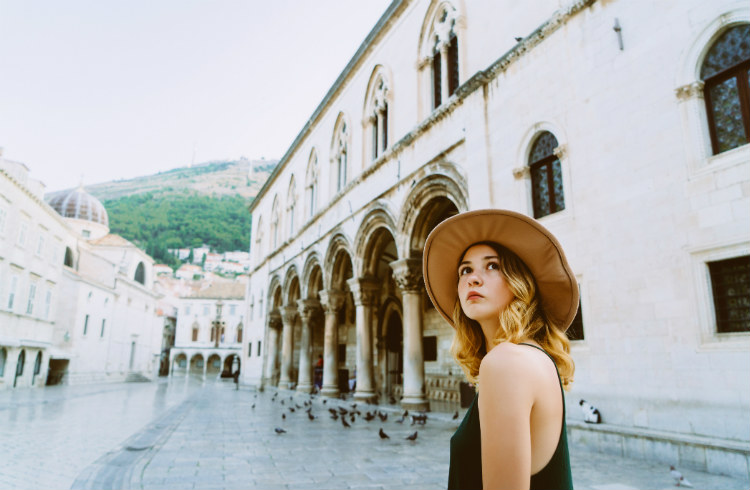
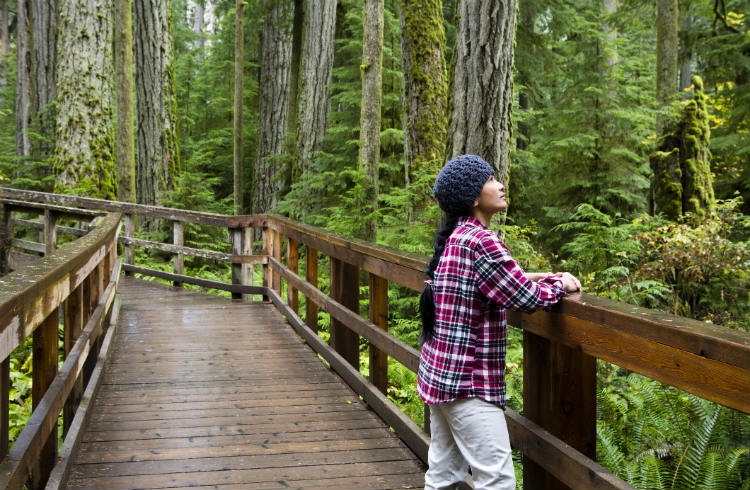
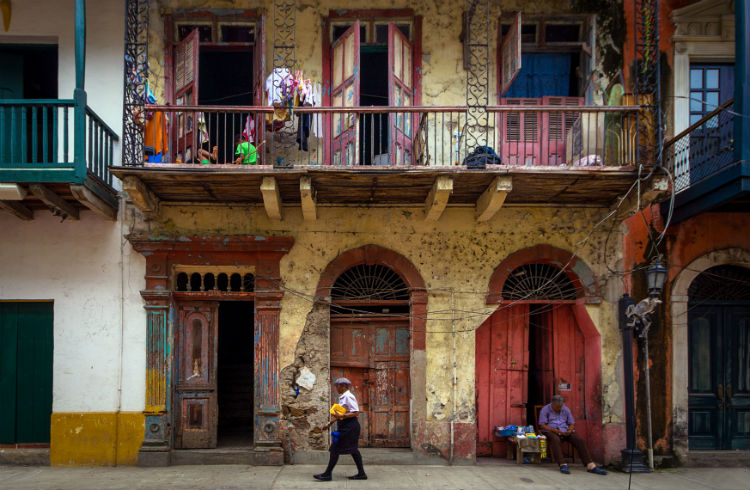

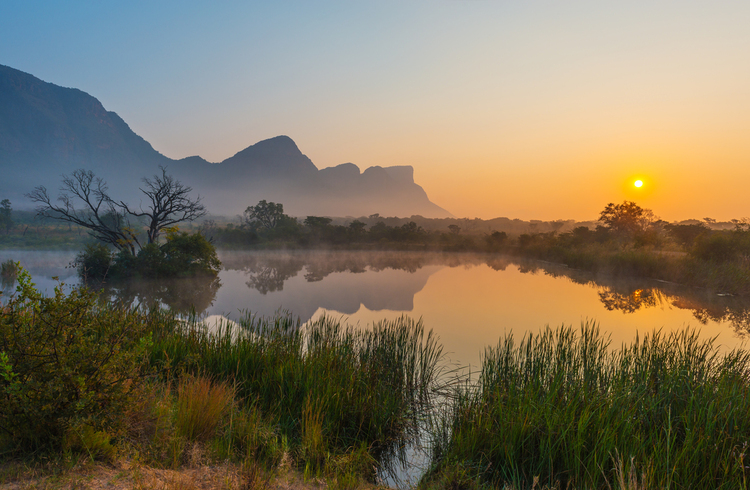

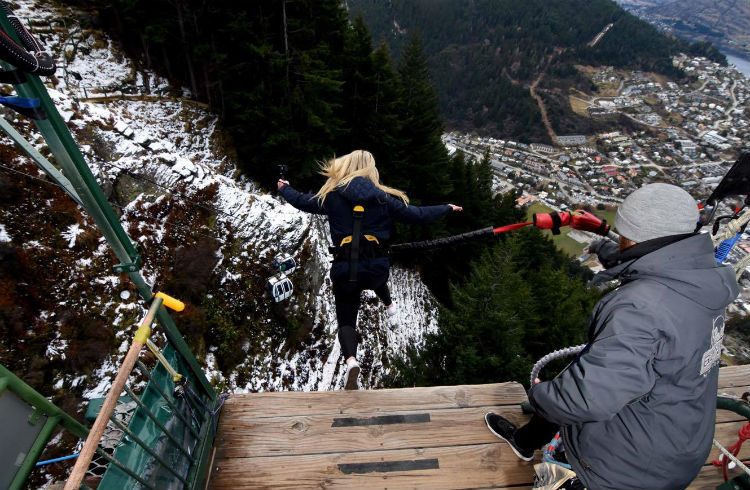
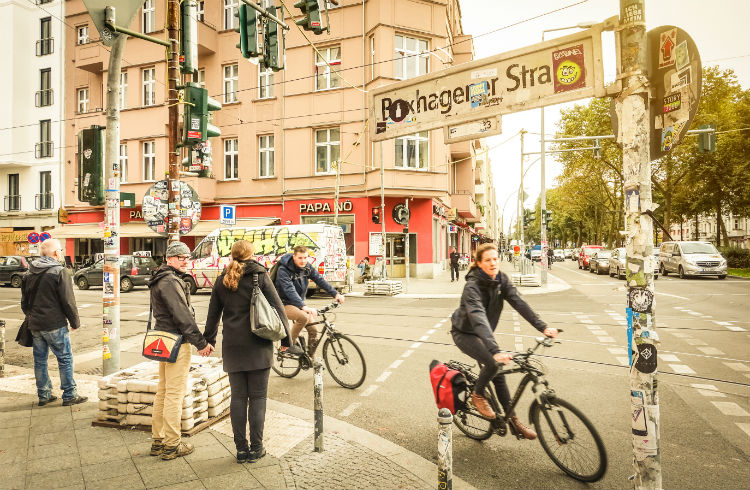
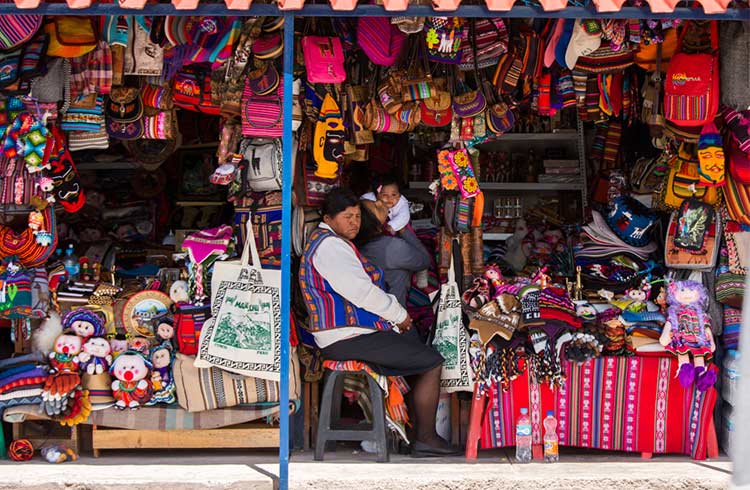
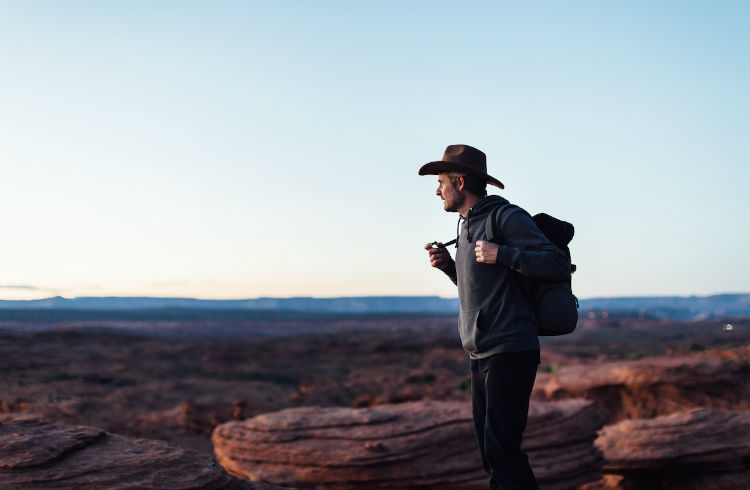
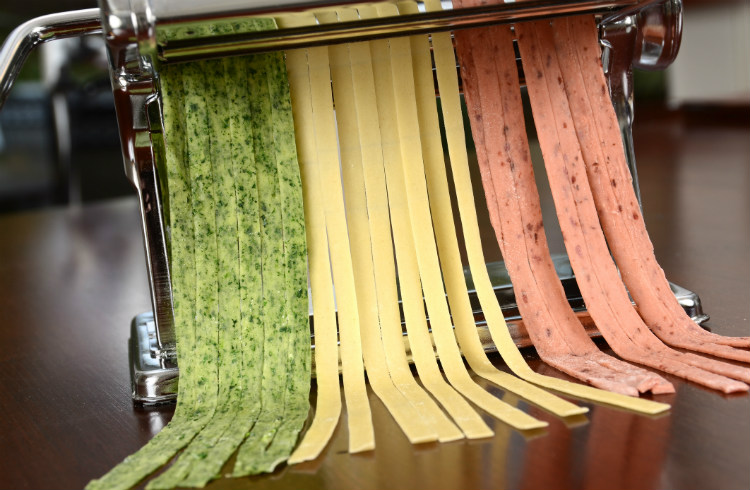
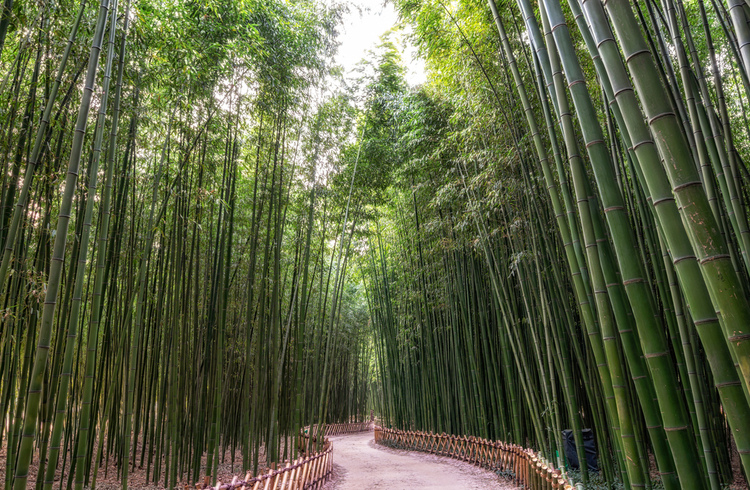
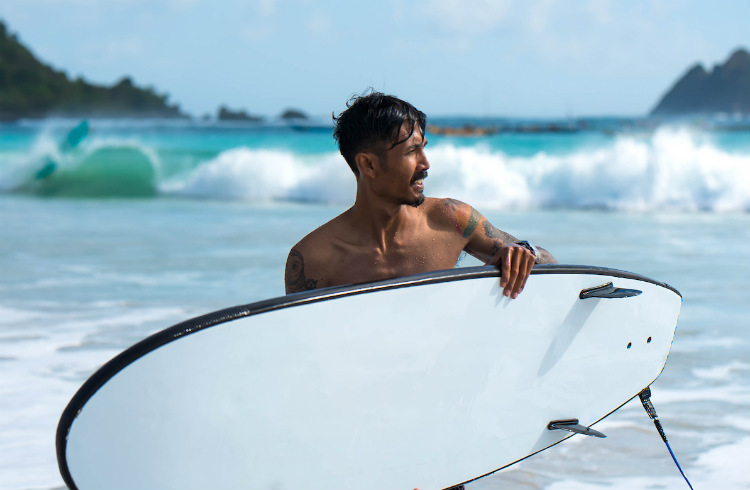
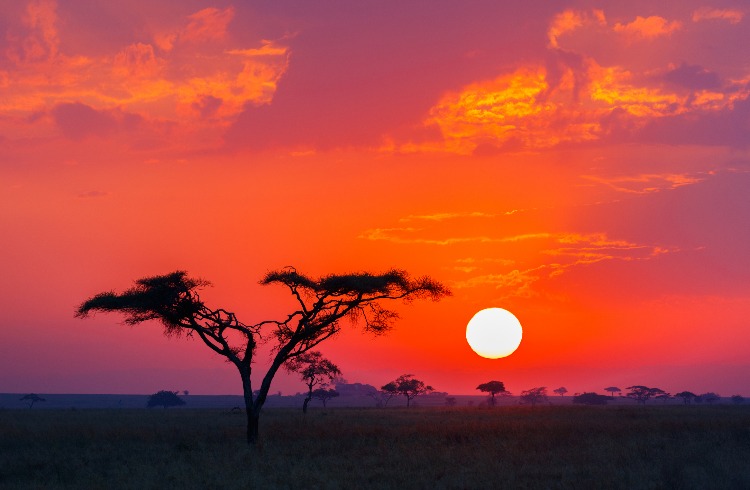
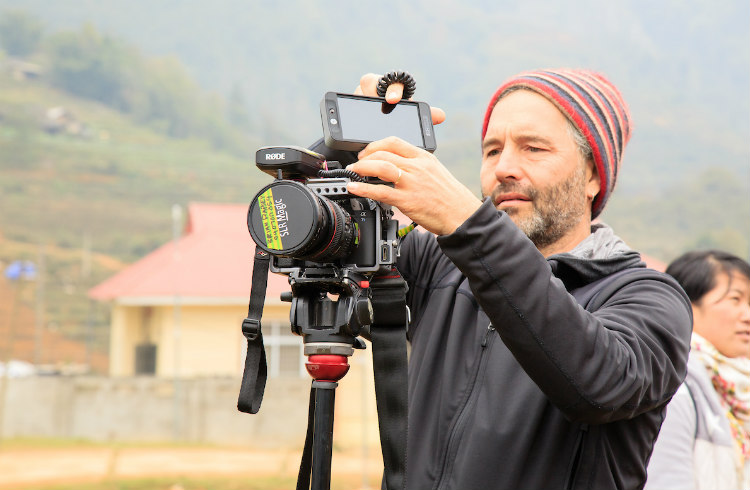
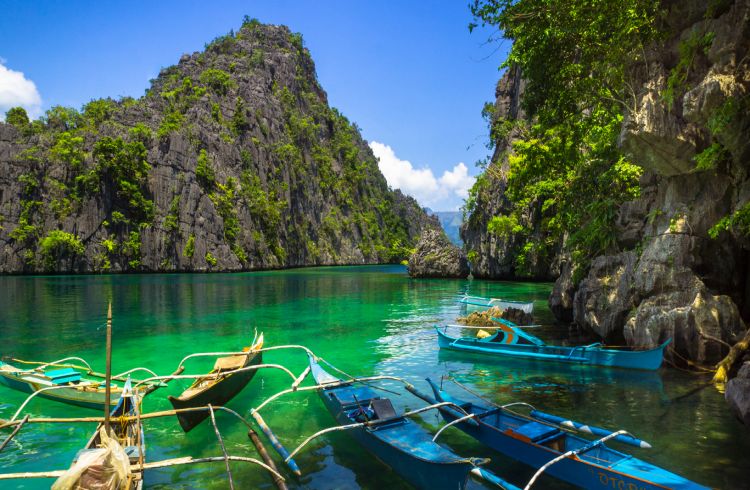
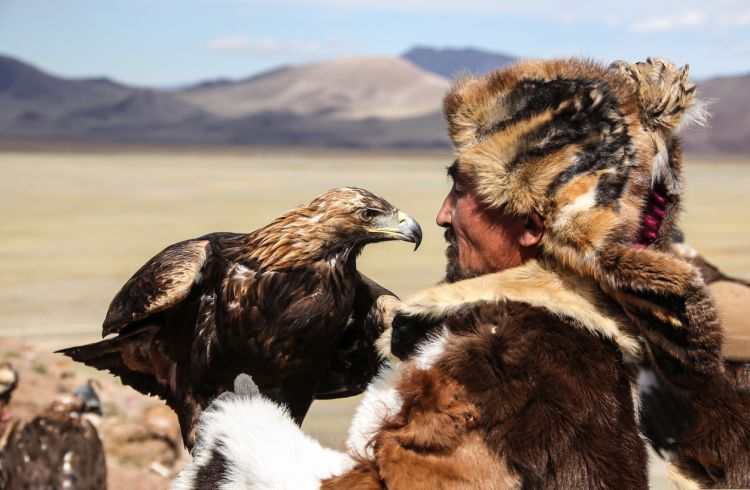
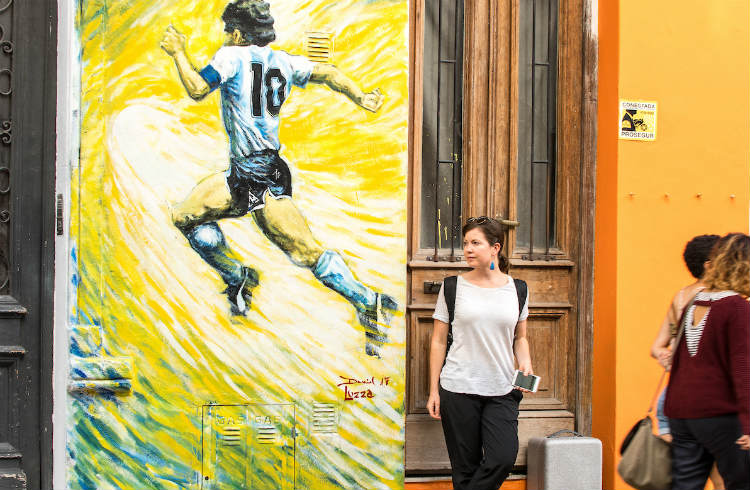
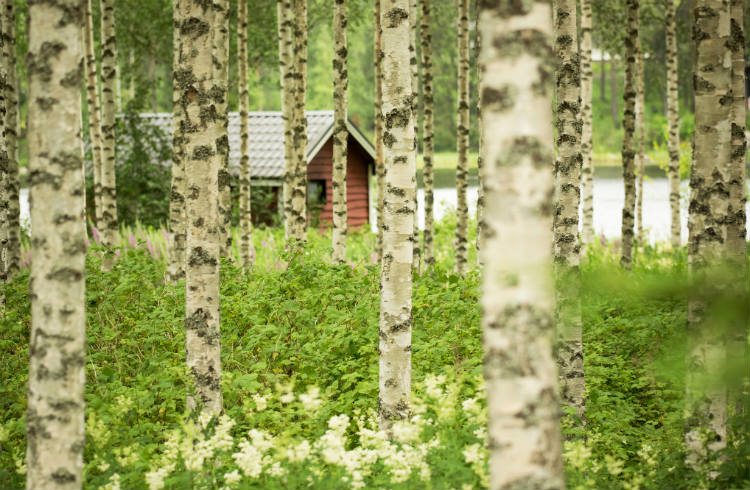
No Comments